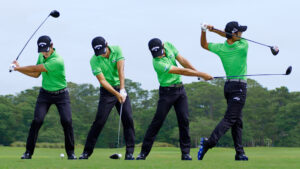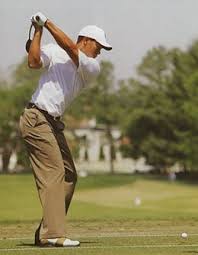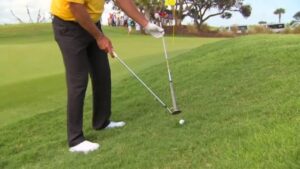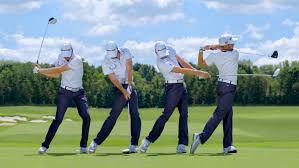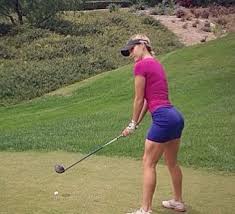If you want to shoot low scores you’ve got to be a good putter. Pros sink 95% of their 3 foot putts, 75% of their 5 foot putts and 50% of their 8 foot putts. Reading the green, choosing the right direction and swing weight will help your minimize your 3-putt holes. But you will never be a great putter if you can’t hit straight putts, exactly where you are aiming. You have to swing straight up your target line. Now let’s improve YOUR success rate for those 3, 5 and 8 foot putts.
One of the biggest mistakes many golfers make is pulling putts to the left (for right handed golfers). In your next round of golf, focus on putting with enough speed to pass the hole by 12 inches (the short ones never go in). Keep a record of the number of putts inside of 8 feet that you hit to the left or right of your target line. Most right handed recreational golfers will pull their putts to the left of their target line. Why?

1/ Putt with a flat wrist by rocking your shoulders. Practice with GOLFSTR+.
Pulling a putt is often caused by looking up and turning your body toward the hole as you swing through the ball. This causes your shoulders to open up and forces your putter on an outside-to-in path, causing the ball to miss on the left side of your target line.
Keeping your head (and hips) still and focusing your leading eye (left eye for right handed golfers) on the ball is a common fix for golfers who struggle with this problem.
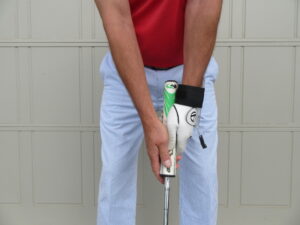
2/ Lock your wrist through impact. [Shown here practicing with GOLFSTR+.]
Drill to Stop your Hips and Legs Moving when You Putt
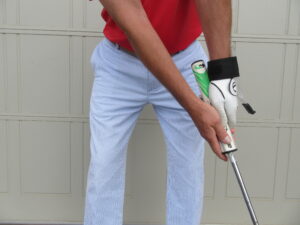
3/ Follow through and up your target line only by rocking your shoulders.
On a practice green, lean a wedge at a 45 degree angle against the side of your trailing leg so that the end of the grip rests on the side of your leg. Practice 5 to 8 foot putts to determine if you can putt, by only rocking your shoulders. If your hips move, during the putting stroke, the wedge will fall off the side of your leg.
Swing Up Your Target Line
Always gripping your putter lightly with both hands and let your shoulders do all the work. To ensure that you are putting up your target line, swing your putter by rocking your shoulders and try releasing the grip with your trailing hand at the point of impact. Continue to swing your putter up your target line, only holding it with your leading hand. This really takes practice but it sure does stop your from slicing your putts.
To help you putt by rocking your shoulders, practice putting with a locked leading wrist using your GOLFSTR+. If your putting swing is totally controlled by your shoulders, your will stop pulling putts to the left and you will sink more putts. You may never do as well as the average pro but that would be a nice goal. Sink more putts! Buy your GOLFSTR+ today at www.golfstr.com




